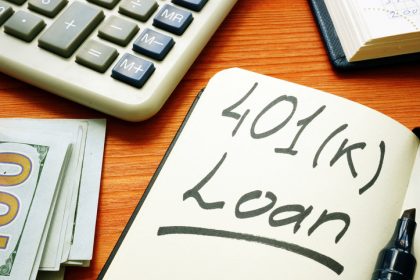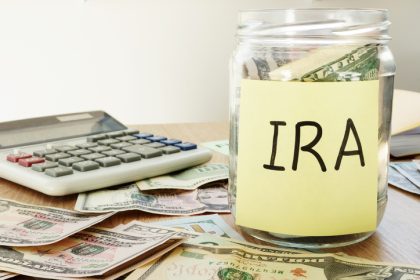After decades of building wealth, retirees often prioritize preserving capital, generating steady income and reducing exposure to market volatility. So what are the safest investments for retirees? From government-backed securities to insured bank products, these lower-risk investments can serve as the financial foundation of a retirement portfolio. Here are five safe investments for retirees.
How confident are you that your portfolio is positioned for today’s economy? A financial advisor can help you create a retirement investment strategy that includes safer assets.
Reasons Why Retirees May Need to Continue Investing
As individuals get closer to retirement, they typically take on less risk in favor of preserving their capital and generating steady income for their portfolios. However, retirees often still need some level of investment to support their financial goals. Here are six common reasons why may need to invest as a retiree:
- Protect savings from inflation: Even modest inflation can eat into your purchasing power over a retirement lasting 20 to 30 years. Investments like dividend-paying stocks or inflation-protected securities help maintain value.
- Earn income for expenses: Beyond Social Security or pensions, investments such as bonds, annuities or dividend funds can provide cash flow for healthcare, housing and daily costs.
- Leave a financial legacy: Keeping part of a portfolio invested allows retirees to grow or maintain assets they wish to pass on to children, grandchildren or charitable causes.
- Pay for unexpected expenses: Investments with liquidity or growth potential can help cover medical emergencies, home repairs or long-term care needs without quickly depleting savings.
- Maintain financial independence: Investments can reduce reliance on family or government benefits by providing extra resources if financial needs increase.
- Manage longevity risk: Investments that balance safety and growth can help maintain savings for a retirement that lasts 30 years and more.
Common Types of Safe Investments for Retirees
Retirees often prioritize safe investments to protect their savings and create dependable income. These options tend to carry lower risk and are meant to maintain value without major fluctuations. They emphasize preserving principal, offering steady earnings and allowing access to funds when necessary.
These investments generally include categories such as insured accounts, government-backed securities, fixed income products and guaranteed income solutions. Each can offer varying degrees of protection, earnings potential and flexibility. And by combining different types, retirees can create a balance between security and available funds for expenses.
Over time, retirees usually increase the portion of their portfolio held in safer investments. This approach helps reduce exposure to market swings and supports long-term financial stability. Although these choices may not deliver high growth, they help preserve wealth and maintain a consistent stream of income in retirement. Here are five common examples you should keep in mind.
1. Certificates of Deposit (CDs)
Certificates of deposit (CDs) are time deposits offered by banks and credit unions with fixed interest rates and guaranteed returns. They are FDIC-insured up to $250,000 per depositor, per institution, which adds an extra layer of safety.
A CD typically offers a higher interest rate than a traditional savings account. All it requires is you keep the money in the account for a set period, typically a few months to several years. For example, a retiree could invest in a 12-month CD paying 4.5% annual interest, knowing exactly how much they’ll earn.
To avoid locking in all your funds for too long, many retirees use a CD ladder strategy. This involves purchasing CDs with staggered maturity dates to maintain liquidity and benefit from rising interest rates.
In terms of asset allocation, CDs might make up 10–20% of a conservative retiree’s portfolio. They can serve as a cash reserve or as a source of short-term income. This helps retirees meet immediate expenses without tapping into more volatile investments.
2. U.S. Treasury Securities

U.S. Treasury securities — including Treasury bills, notes and bonds — are considered among the safest investments for retirees. Backed by the U.S. government, these securities offer predictable returns and a variety of maturity lengths. They are also exempt from state and local income taxes.
Retirees can build a portfolio of Treasuries with different maturities to create a bond ladder, allowing for consistent income and reinvestment opportunities.
In a retiree’s portfolio, Treasuries might account for 30–40% of the total allocation. They are particularly important for those with a very low risk tolerance or who rely on their investments for income.
3. Money Market Accounts and Funds
Money market accounts (MMAs) and money market mutual funds are short-term, interest-bearing investments that offer liquidity and safety. MMAs are bank products typically insured by the FDIC that maintain stable values and invest in high-quality short-term debt instruments. While returns on money market funds are typically lower than bonds or CDs, they provide immediate access to funds. This makes them suitable for emergency savings or for covering near-term expenses.
Retirees might allocate 5–10% of their portfolio to money market instruments, especially if they want to avoid stock market risk and maintain liquidity. These funds can also be used as the default cash sweep option in a brokerage account to earn interest on uninvested cash.
4. Fixed Annuities
Fixed annuities provide guaranteed payments over a specified period, or for the rest of the retiree’s life. In exchange for a lump-sum investment, the insurance company pays out a steady income stream, making annuities a popular choice for retirees who want pension-like stability.
For example, a retiree might purchase a single premium immediate annuity (SPIA) that pays $1,000 per month for life, regardless of market performance. This can help cover essential expenses like housing, healthcare and groceries without relying on withdrawals from other investments.
In terms of asset allocation, a fixed annuity might represent 15–30% of a retiree’s portfolio, depending on their assets, financial situation and goals. They are particularly attractive for those who lack a pension or want to reduce the risk of outliving their money.
5. Short-Term Bond Funds

Short-term bond funds invest in government, corporate or municipal bonds with maturities of one to three years. These funds offer higher yields than money market accounts and less interest rate risk than long-term bonds, making them a strong middle-ground investment for retirees.
For instance, a retiree might invest in a short-term bond ETF that holds investment-grade bonds with average maturities of two years and a current yield of 4.2%. These funds provide regular interest income and relatively low volatility, though they are subject to market fluctuations.
Retirees might allocate 15–25% of their portfolio to short-term bond funds, using them to balance risk and return while maintaining flexibility. These funds work well in a diversified fixed-income strategy alongside CDs and Treasuries.
Bottom Line
As retirement nears, safety becomes a top priority in financial planning. The safest investments for retirees — including CDs, U.S. Treasuries, money market accounts, annuities and short-term bond funds — can offer the stability and income that you need to enjoy their post-career years with confidence. While no investment is entirely risk-free, these vehicles provide protection against market volatility and help ensure consistent cash flow.
Retirement Planning Tips
- A financial advisor can help you choose safe investments and manage risk for your retirement portfolio. Finding a financial advisor doesn’t have to be hard. SmartAsset’s free tool matches you with vetted financial advisors who serve your area, and you can have a free introductory call with your advisor matches to decide which one you feel is right for you. If you’re ready to find an advisor who can help you achieve your financial goals, get started now.
- SmartAsset’s Social Security calculator can help you estimate future monthly government benefits.
Photo credit: ©iStock.com/brizmaker, ©iStock.com/Jirapong Manustrong, ©iStock.com/Deagreez
Read the full article here
















